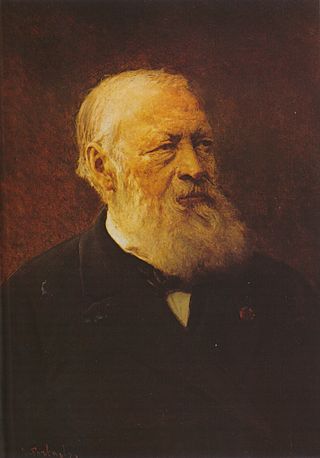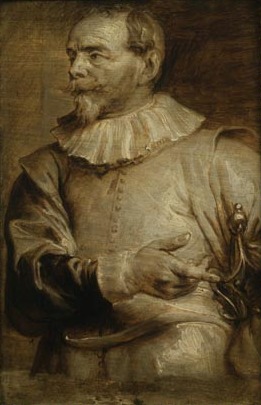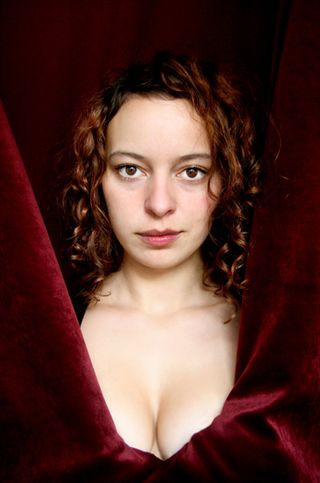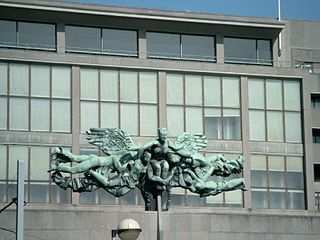
Gerard Kornelis van het Reve was a Dutch writer. He started writing as Simon Gerard van het Reve and adopted the shorter Gerard Reve in 1973. Together with Willem Frederik Hermans and Harry Mulisch, he is considered one of the "Great Three" of Dutch post-war literature. His 1981 novel De vierde man was the basis for Paul Verhoeven's 1983 film.

Henri (Hendrik) Conscience was a Belgian author. He is considered the pioneer of Dutch-language literature in Flanders, writing at a time when Belgium was dominated by the French language among the upper classes, in literature and government. Conscience fought as a Belgian revolutionary in 1830 and was a notable writer in the Romanticist style popular in the early 19th century. He is best known for his romantic nationalist novel, The Lion of Flanders (1838), inspired by the victory of a Flemish peasant militia over French knights at the 1302 Battle of the Golden Spurs during the Franco-Flemish War.

Alphonsus Josephus de Ridder was a Belgian writer and poet who wrote under the pseudonym Willem Elsschot. One of the most prominent Flemish authors, his most famous work, Cheese (1933) is the most translated Flemish-language novel of all time.

Frans Floris, Frans Floris the Elder or Frans Floris de Vriendt was a Flemish painter, draughtsman, print artist and tapestry designer. He is mainly known for his history paintings, allegorical scenes and portraits. He played an important role in the movement in Northern Renaissance painting referred to as Romanism. The Romanists had typically travelled to Italy to study the works of leading Italian High Renaissance artists such as Michelangelo, Raphael and their followers. Their art assimilated these Italian influences into the Northern painting tradition.

Tom Lanoye was born on 27 August 1958 in the Belgian city Sint Niklaas. He is a novelist, poet, columnist, screenwriter and playwright. He is one of the most widely read and honoured authors in his language area, and makes regular appearances at all the major European theatre festivals.

Het Laatste Nieuws is a Dutch-language newspaper based in Antwerp, Belgium. It was founded by Julius Hoste Sr. on 7 June 1888. It is now part of DPG Media, and is the most popular newspaper in Flanders and Belgium.
Flemish literature is literature from Flanders, historically a region comprising parts of present-day Belgium, France and the Netherlands. Until the early 19th century, this literature was regarded as an integral part of Dutch literature. After Belgium became independent from the Netherlands in 1830, the term Flemish literature acquired a narrower meaning and refers to the Dutch-language literature produced in Belgium. It remains a part of Dutch-language literature.

Lijmen/Het Been is a 2001 Belgian crime film adapted from short stories by Willem Elsschot and directed by Robbe De Hert, starring Mike Verdrengh and Koen De Bouw. The movie was coproduced by Belgian and Dutch film companies.
Ludovicus Carolus Zielens was a Belgian novelist and journalist. He wrote many novels, his Moeder, waarom leven wij? being the most well known. He also received several awards in recognition of his work.

Pieter Frans van Kerckhoven was a Flemish writer and one of the leaders of the early Flemish movement. He was the son of a broker, and his well-off birth allowed him a decent education. After he had first been instructed in a private school, he passed through the Antwerp athenaeum together with his contemporary and friend Domien Sleeckx. Van Kerckhoven was in that period a tireless reader and spent almost his entire pocket money to buy books of the French traditional authors. During his youth, Van Kerckhoven was, just like the rest of its family, very religious. After Van Kerckhoven in 1836, graduated from the Antwerp athenaeum, he studied medicine in Italy, at the University of Bologna. In Italy, Van Kerckhoven witnessed the restless and rebellious Risorgimento. The confrontation with the liberal and anticlerical Risorgimento movement would determine his later progressive-liberal conviction. Van Kerckhoven evolved from a pious catholic to an enthusiastic and persuaded liberal. In spite of the personal change which Van Kerckhoven underwent in Italy, he remained, however, religious.
Frans Jozef de Cort, was a Flemish writer.
Roger van de Velde was a Belgian author and journalist, known for his collections of short stories written while he was interred in psychiatric institutions.

Ferdinand Van der Auwera, pseudonym Fernand Auwera was a Belgian writer. His fragile health during his youth and its impact on his life (solitude), had an effect on his first literary work.

Sebastiaen Vrancx, Sebastiaan Vrancx or Sebastian Vranckx was a Flemish Baroque painter, draughtsman and designer of prints who is mainly known for his battle scenes, a genre that he pioneered in Netherlandish painting. He also created landscapes with mythological and allegorical scenes, scenes with robbers, village scenes and celebrations in cities. He was a gifted figure painter who was regularly invited to paint the staffage in compositions of fellow painters. As an active member of a local chamber of rhetoric, he wrote comedies and a number of poems. He was further captain of the Antwerp civil militia schutterij.

Flemish Baroque painting was a style of painting in the Southern Netherlands during Spanish control in the 16th and 17th centuries. The period roughly begins when the Dutch Republic was split from the Habsburg Spain regions to the south with the Spanish recapturing of Antwerp in 1585 and goes until about 1700, when Spanish Habsburg authority ended with the death of King Charles II. Antwerp, home to the prominent artists Peter Paul Rubens, Anthony van Dyck, and Jacob Jordaens, was the artistic nexus, while other notable cities include Brussels and Ghent.

Carel van Savoyen or Carel van Savoy (1620/21–1665) was a Flemish painter, draughtsman and printmaker who was active in Antwerp and Amsterdam. He is mainly known for his history paintings and portraits but he also painted allegories and genre scenes.

Dick Matena is a Dutch comics writer and cartoonist. He has also published under the pseudonyms A. den Dooier, John Kelly and Dick Richards. He has made several kinds of comics, from humor comics to erotic comics, but is best known for his comic book adaptations of famous literary novels.

Marie Vinck is a Belgian actress.

Jozef Cantré was a Belgian sculptor and illustrator. He was one of the main artists in the development of the movement of Flemish Expressionism.

The Dutch and Flemish authors' banquet, was a literary event on August 26, 1933, held at Deerlijk in Belgium, attended by the prominent writers in Belgium and the Netherlands of that era. It was held on the same day as a celebration of the anniversary of the Association of Large and Young Families of Deerlijk. The photo of the event is memorable because it shows an entire generation of Dutch and Flemish writers in one frame. Willem Elsschot met Jan Greshoff at the event, who convinced him to go back to writing, and the album 'Kaas' resulted. Also remarkable is that August Defresne and his secret mistress Anna Charlotte Ruys were present at the event.

















